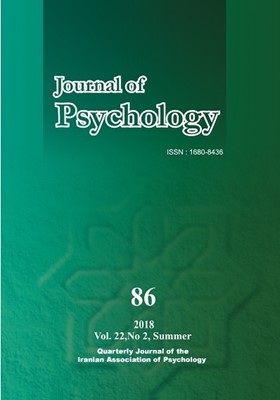-
-
List of Articles
-
Open Access Article
1 - A Study of Psychometric Properties of Future Time Perspective Scale (FTPS) and its Relation to Academic Achievement
Mohsen Afshar Elahe Hejazi Javad Ejei Nahid Sadeghi -
Open Access Article
2 - Language Development in Persian-Speaking 6- to 7-Year-Old Children
Mahnaz Dehghan Tezerjani Parvin Kadivar Mohammad Hosein Abdollahi Hamid Reza Hasanabadi -
Open Access Article
3 - The Mediating Role of Positive and Negative Affect in the Relationship between Meaning in Life and Mental Health
Leila Mohammadi Mohammad Ali Besharat Mohammad Reza Rezazade Masoud Gholamali Lavasani -
Open Access Article
4 - The Moderating Role of Interal-External Locus of Control in the Relationship between Early Maladaptive Schemas and Social Anxiety in Adolescents
Seyed Valliollah Mousavi Sajjad Rezaei Setareh Atefi Karajvandani Hamid Javanparast -
Open Access Article
5 - Structural Relationship between Child Abuse and Emotion Dysregulation with Symptoms of Borderline Personality Disorder
Talieh Moosavihondori Majid Mahmoud Alilou Yaser Madani -
Open Access Article
6 - The Relation of Classroom Instructional Quality and Cognitive Appraisals with Academic Emotions and its Motivational Outcomes
Zeinab Rabbani Siavash Talepasand Eśhagh Rahimian Boogar Mohammad Ali Mohammadifar -
Open Access Article
7 - The Effectiveness of Group Counseling "Narrative Therapy" on Family Functioning among Women with Addicted Husbands
Mohammad Khodayarifard Gholamreza Sohrabpour Elahe Hejazi -
Open Access Article
8 - Book Review
-
The rights to this website are owned by the Raimag Press Management System.
Copyright © 2017-2025







